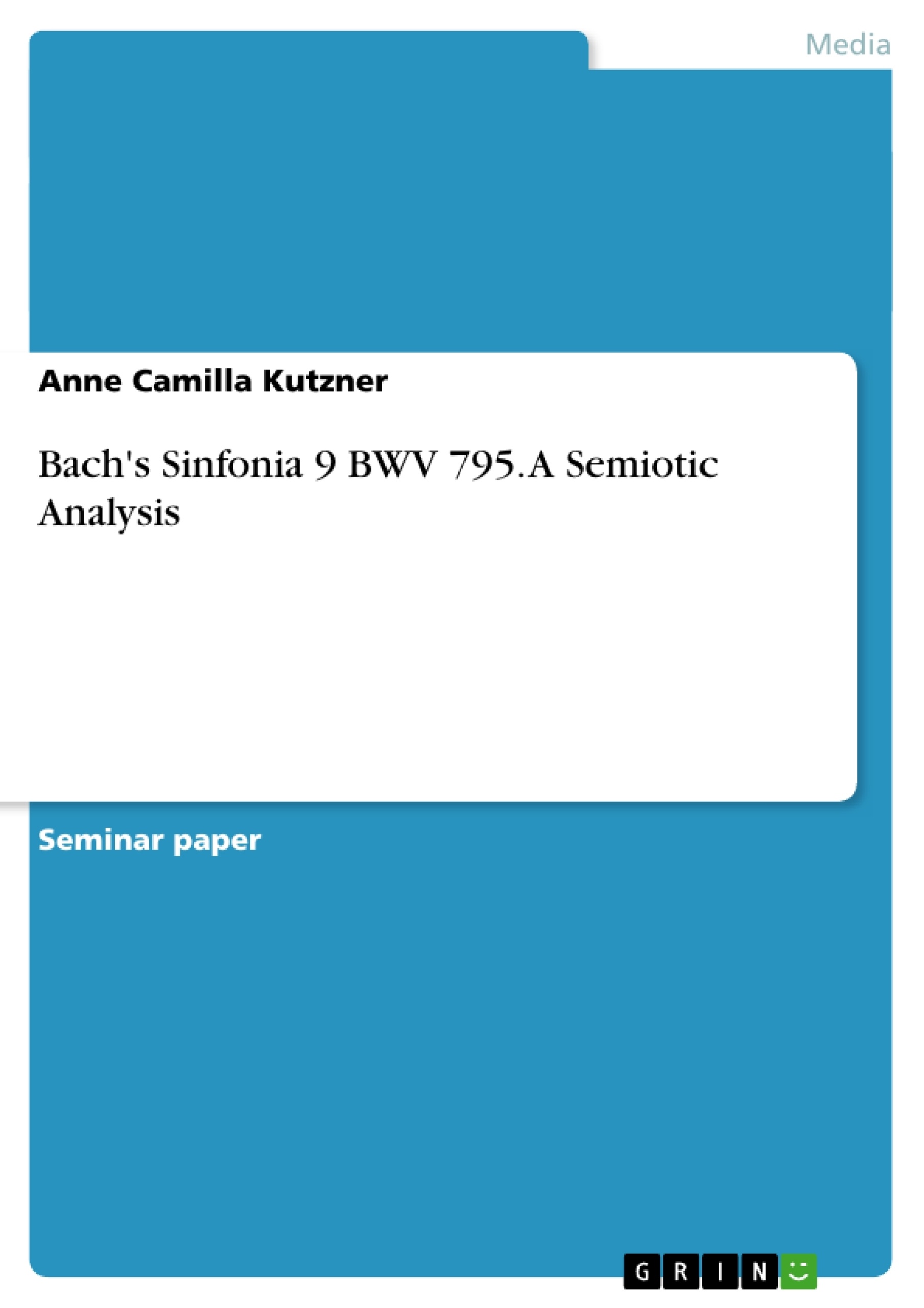Introduction and Overview
The idea of this paper is an analysis of Bach’s Sinfonia 9 in f minor, BWV 795, first with the tools of structural analysis I learned in counterpoint and harmony classes, then with a semiotic approach. The project is to try to determine whether semiotic analysis can help us in understanding highly “abstract”, non-programmatic instrumental music. I have chosen this piece for two reasons. The first is simply experience. I have done analyses of it before, in a counterpoint class. I remember the sessions about this piece being hard work, but then there was a moment of understanding and suddenly it all seemed so simple. (A look at the harmonic issues will show it is still very complicated.) The second reason is the seemingly abstract nature of the piece. In spite of this abstraction, I do get emotionally involved when listening to this piece, I cannot ignore the emotion of sadness and suffering. So the semiotic part of this analysis is about the referential elements under the abstract surface, about the expressive content of an instrumental, non-programmatic piece. The goal is to show one of the possible ways in which meaning is attributed to music: in this case, by conventionalized signifiers.
Inhaltsverzeichnis (Table of Contents)
- Introduction and Overview
- Structural Analysis
- "Ein harmonisches Vexierspiel" (Hindemith)
- Counterpoint Issues
- Harmonic Interpunctions and Formal Issues
- Semiotic Analysis
- A Semiotic Approach: Signifiers in BWV 795
- Raymond Monelle's Analysis of BWV 886
- The Subjects and Their Possible Interpretation
- Subject
- Countersubject
- Second Countersubject
- What is Different in BWV 795?
- Speculations
- Literature
Zielsetzung und Themenschwerpunkte (Objectives and Key Themes)
This paper aims to analyze Bach's Sinfonia 9 in f minor, BWV 795, using both structural analysis techniques and a semiotic approach. The objective is to determine whether semiotic analysis can contribute to understanding non-programmatic instrumental music. The paper explores the emotional impact of the piece, despite its abstract nature, and investigates the attribution of meaning through conventionalized signifiers.
- Structural analysis of Bach's Sinfonia 9, BWV 795, using techniques of counterpoint and harmony
- Exploration of the piece's harmonic ambiguity and the role of counterpoint
- Semiotic analysis of the piece to identify the expressive content and meaning conveyed
- Investigating the attribution of meaning to instrumental music through conventionalized signifiers
- Examining the emotional impact of the piece despite its abstract nature
Zusammenfassung der Kapitel (Chapter Summaries)
The "Introduction and Overview" chapter introduces the paper's objective, which is to analyze Bach's Sinfonia 9 using both structural and semiotic approaches. The chapter also discusses the reasons for choosing this particular piece and the focus on exploring the emotional impact of the music.
The "Structural Analysis" chapter delves into the harmonic complexities of the piece, highlighting Hindemith's analysis of the "vexing" nature of the harmonies. The chapter examines the interplay between actual and heard dissonances, creating a sense of harmonic ambiguity.
The "Counterpoint Issues" chapter discusses the consistent presence of two obligatory counterpoints accompanying the theme. The chapter explores the unique construction of the piece, resembling a permutation fugue, despite the complex dissonances.
The "Harmonic Interpunctions and Formal Issues" chapter examines the harmonic structure of the piece, identifying key modulations and tonalities. The chapter suggests a possible grouping of the piece based on the harmonic interpunctions.
Schlüsselwörter (Keywords)
The paper focuses on the following keywords and concepts: Bach, Sinfonia 9, BWV 795, structural analysis, counterpoint, harmony, semiotic analysis, signifiers, expressive content, non-programmatic instrumental music, harmonic ambiguity, permutation fugue, Hindemith, emotion, meaning, attribution.
- Quote paper
- Anne Camilla Kutzner (Author), 2004, Bach's Sinfonia 9 BWV 795. A Semiotic Analysis, Munich, GRIN Verlag, https://www.grin.com/document/42028



